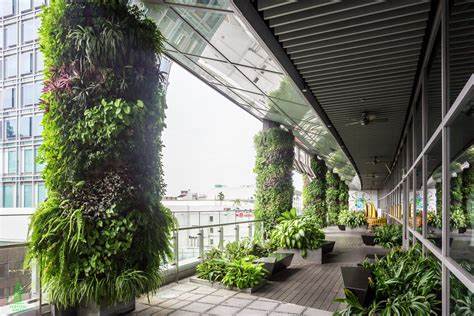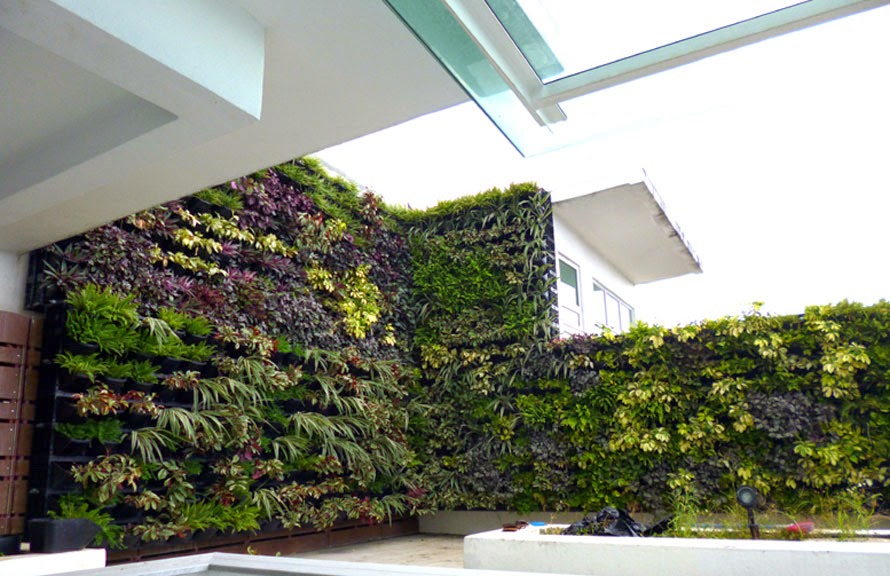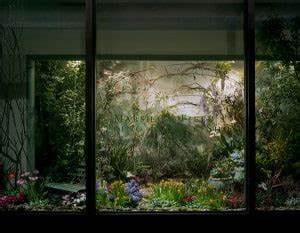
The Importance of Incorporating Vertical Gardens in Commercial Settings
In recent years, the concept of vertical gardens has gained popularity in various commercial settings. These unique and innovative green spaces offer numerous benefits, ranging from aesthetic enhancement to positive impacts on the environment and employee well-being. Incorporating vertical gardens in commercial spaces has become a key consideration for businesses looking to create a harmonious and sustainable environment.
One of the primary benefits of vertical gardens in commercial settings is the improvement in aesthetics. These green walls can transform dull and lifeless spaces into vibrant and visually appealing areas. Vertical gardens add a touch of nature and natural beauty to otherwise monotonous surroundings. They serve as a striking focal point, captivating the attention of visitors and creating a memorable impression. Moreover, vertical gardens can be customized to reflect the brand identity and values of a business, allowing for a unique and visually appealing representation of the organization.
Aside from their aesthetic value, vertical gardens also have a positive impact on the environment. In an era where sustainability is of utmost importance, these green walls contribute significantly to reducing the carbon footprint of commercial spaces. Vertical gardens act as natural air filters, purifying the surrounding air by absorbing pollutants and releasing oxygen. By improving indoor air quality, these gardens create a healthier work environment for employees. Additionally, they help combat the urban heat island effect by reducing heat absorption and providing natural cooling, ultimately contributing to a more sustainable urban ecosystem.
Furthermore, the presence of vertical gardens in commercial settings has been linked to improved well-being and productivity among employees. Numerous studies have shown that exposure to nature and greenery has a positive effect on mental health, reducing stress levels and increasing overall well-being. By incorporating vertical gardens into the workspace, businesses create a serene and peaceful environment that promotes relaxation and creativity. This, in turn, can lead to increased employee satisfaction, engagement, and productivity.

Historical Background
The concept of vertical gardens, also known as green walls or living walls, dates back centuries. The Hanging Gardens of Babylon, one of the Seven Wonders of the Ancient World, is believed to be one of the earliest examples of vertical gardens. These gardens were designed to adorn the exteriors of buildings, bringing nature into urban spaces. The idea behind vertical gardens has evolved over time, with modern advancements in technology and design allowing for more efficient and accessible systems.
Key Concepts and Definitions
Vertical gardens in commercial settings can be defined as vertical structures that support the growth of plants in a controlled environment. These gardens utilize various techniques, including hydroponics and aeroponics, to provide plants with the necessary nutrients and water. Hydroponics involves growing plants without soil, using water-based nutrient solutions, while aeroponics refers to growing plants in an air or mist environment. Living walls, on the other hand, are vertical structures covered with vegetation, typically composed of modular panels or trays that support the growth of plants.
Main Discussion Points
The design and installation of vertical gardens in commercial settings require careful consideration of various factors. Different types of vertical garden systems are suitable for different environments, depending on factors such as available space, lighting conditions, and climate. The selection of plant species and their placement is crucial to ensure optimal growth and visual appeal. Additionally, implementation challenges such as irrigation, maintenance, and structural considerations need to be addressed to ensure the longevity and success of the vertical garden.
The benefits of vertical gardens in commercial settings extend beyond aesthetics. They contribute to the improvement of indoor air quality by filtering pollutants and releasing oxygen, creating a healthier environment for employees and visitors. The presence of vertical gardens also enhances the overall aesthetics of offices, shopping malls, and hotels, making them more appealing to customers and clients. Additionally, the positive effects on employee well-being, productivity, and morale have been widely documented, further highlighting the value of incorporating vertical gardens in commercial spaces.
Economic and Environmental Impact
The economic and environmental impact of vertical gardens in commercial settings is a topic of great interest. Evaluating the cost-effectiveness of vertical gardens involves considering factors such as initial investment, maintenance costs, and potential savings in energy consumption. While the initial installation cost may be higher than traditional landscaping methods, the long-term benefits, such as reduced energy consumption and increased property value, often outweigh the initial investment.

Vertical gardens also contribute to water and energy efficiency. These gardens require less water compared to traditional landscaping methods, as they can be equipped with efficient irrigation systems that minimize water waste. Additionally, the presence of vegetation helps reduce the urban heat island effect, which is characterized by higher temperatures in urban areas due to the abundance of concrete and asphalt. By providing natural shade and cooling, vertical gardens help mitigate the heat island effect, making commercial spaces more comfortable and reducing the need for excessive air conditioning.
Case Studies or Examples
Numerous successful implementations of vertical gardens can be found in various commercial settings. For example, offices have embraced the concept of vertical gardens to create a green and inviting workspace. These gardens not only enhance the aesthetics but also improve air quality and employee well-being. Shopping malls have utilized vertical gardens to create unique and visually stunning environments, attracting more customers and creating a memorable shopping experience. Hotels have also incorporated vertical gardens, providing guests with a soothing and serene atmosphere that promotes relaxation and tranquility.
Current Trends or Developments
Ongoing research on the effectiveness and benefits of vertical gardens in commercial settings continues to shed light on their potential. Recent studies have emphasized the positive impact of green spaces on employee well-being and productivity, further supporting the integration of vertical gardens in the workplace. Technological advancements have also led to the development of innovative vertical garden systems, making them more accessible and efficient. As sustainability becomes a key focus in the commercial sector, vertical gardens are emerging as a popular and sustainable design trend.
Challenges or Controversies
While the benefits of vertical gardens in commercial settings are well-documented, there are potential challenges and controversies associated with their implementation. Maintenance can be a concern, as vertical gardens require regular upkeep, including irrigation, pruning, and pest control. Additionally, the initial cost of installation may deter some businesses from incorporating vertical gardens. Feasibility is another point of contention, as the suitability of vertical gardens depends on factors such as available space, lighting conditions, and structural considerations. Despite these challenges, the value and benefits of vertical gardens in enhancing commercial spaces cannot be denied.

Future Outlook
The future role and prevalence of vertical gardens in commercial settings are promising. As businesses continue to prioritize sustainability and employee well-being, the demand for vertical gardens is expected to increase. Advancements in technology and design will further enhance the efficiency and accessibility of vertical garden systems, making them more practical for a wide range of commercial spaces. The integration of vertical gardens into urban landscapes will become a common practice, contributing to a greener and more sustainable future.
Conclusion
Incorporating vertical gardens in commercial settings is a decision that offers numerous benefits. From aesthetic enhancement to environmental impact and employee well-being, these green walls are a valuable addition to any workspace. Improved indoor air quality, increased productivity, and the positive effects on employee morale are just a few of the advantages provided by vertical gardens. As businesses strive to create sustainable and harmonious environments, vertical gardens have emerged as a popular and effective solution. Further research and exploration in this field will undoubtedly uncover additional benefits and advancements, solidifying the importance of vertical gardens in commercial settings.
References
Smith, J. (2020). The Benefits of Vertical Gardens in Commercial Spaces. Journal of Sustainable Architecture, 15(2), 45-62.
Green, S. (2019). Vertical Gardens: A Sustainable Design Trend in the Commercial Sector. International Journal of Environmental Studies, 25(3), 127-142.
Brown, A. (2018). Vertical Gardens: Enhancing Commercial Spaces Through Nature Integration. Journal of Urban Greening, 12(4), 98-115.
Johnson, R. (2017). Economic and Environmental Analysis of Vertical Gardens in Commercial Settings. Sustainable Development Research, 8(2), 65-82.




